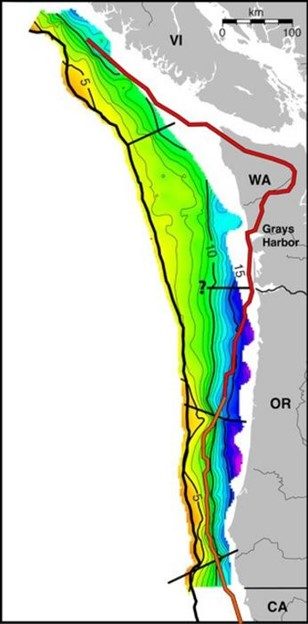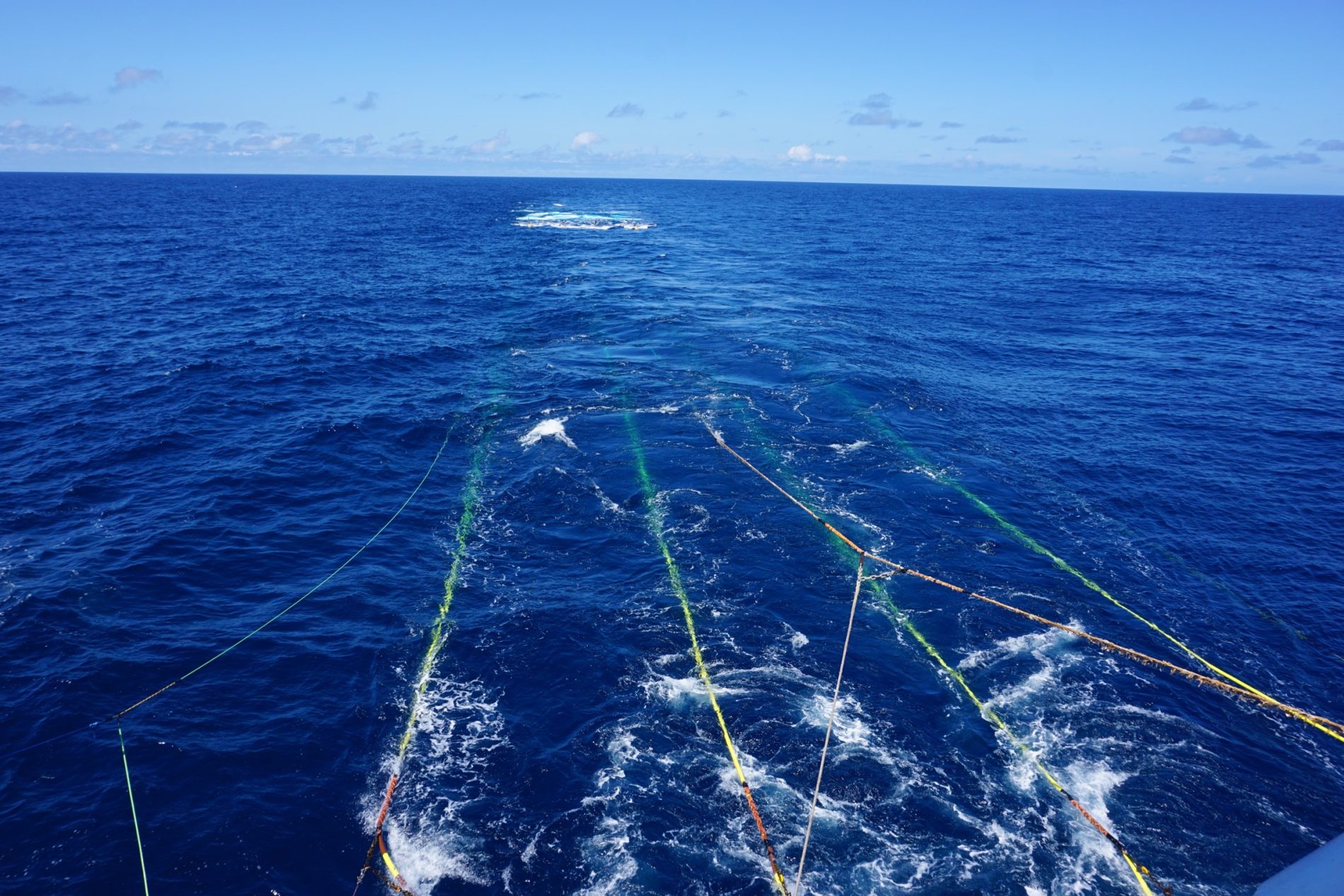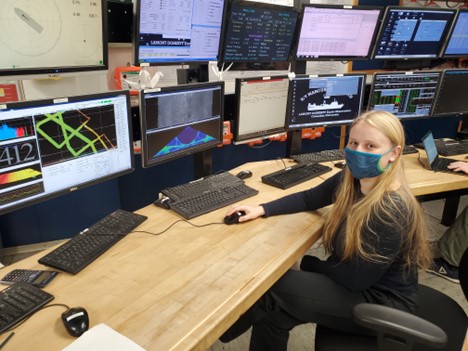Scientists have long been working to understand the subterranean structures and mechanics of the Cascadia Subduction Zone, the 600-mile-long fault where two tectonic plates meet along the coasts of southern British Columbia, Washington, Oregon and northern California. Understanding these complex structures beneath the seafloor can delineate places most susceptible to earthquakes, how big they might be and what warning signs they might produce.
It is debated whether past events, including the 1700 quake, ruptured along the entire zone or just part of it. Building up stresses over longer stretches of faults can produce much bigger earthquakes and subsequent tsunamis.
New research published in June in Science Advances provides a more detailed map of the Cascadia Subduction Zone that hints the megathrust fault is not just one continuous structure, but is divided into at least four segments, each potentially somewhat insulated against movements of the others. University of Washington researchers played a key role in this multi-institutional effort.

“We can’t say that this definitely means only single segments will rupture, or that definitely the whole thing will go at once,” said co-author Harold Tobin, a professor in Earth and Space Sciences and director of the Pacific Northwest Seismic Network. “But this does upgrade evidence that there are segmented ruptures.”
In 2021, co-author Madeleine Lucas, a UW doctoral candidate in Earth and Space Sciences, participated in the 41-day cruise that collected data offshore. Researchers aboard the ship penetrated the seafloor with powerful sound pulses and read the echoes, which were then converted into images, somewhat similar to how physicians create interior scans of the human body.
The imagery she and others collected suggests the segmentation is caused by differences in the kinds of rocks in the North American continental plate, with some being denser than others. This variety in continental rocks causes the incoming, more pliable oceanic plate to bend and twist to accommodate differences in overlying pressure, with some segments subducting at steep angles, and others at shallow ones.
The roughness of the subterranean topography might also affect how the two plates interact and how far seismic waves can travel. Segments that are relatively rough might limit how far a quake can propagate within the segment, thus limiting the quake’s size. In contrast, segments that are relatively smooth may be more likely to rupture along its entire length at once.
The researchers zeroed in on one segment, which runs from southern Vancouver Island alongside Washington state and ends in northern Oregon. The subterranean topography of other segments is relatively rough, with oceanic features like faults and subducted seamounts rubbing up against the upper plate — features that might erode the upper plate and limit how far any quake may propagate within the segment, thus limiting the quake’s size. The Washington segment is quite smooth, making it potentially the most dangerous section.
Also in this segment, the seafloor is subducting under the continental crust at a shallow angle relative to the other segments. In the other segments, most of the earthquake-prone interface between the plates lies offshore, but here the study found the shallow subduction angle means the fault zone probably extends eastward to reach directly under Washington’s Olympic Peninsula. This might magnify any shaking on land.
“It requires a lot more study, but for places like Tacoma and Seattle, it could mean the difference between alarming and catastrophic,” says Tobin.
With funding from the U.S. Geological Survey, a consortium of state and federal agencies and academic institutions has already been analyzing the data since it became available.
“The study provides a new framework for earthquake and tsunami hazard assessment,” said Suzanne Carbotte, a marine geophysicist at Columbia University’s Lamont-Doherty Earth Observatory and lead researcher on the study.
Practical assessments that could affect building codes or other aspects of preparedness may be published as early as next year, say the researchers.
Tobin can be reached at . See related national coverage in The Washington Post, NBC News, Live Science and Cosmos, and previous coverage of the 2021 research cruise on KUOW.
Adapted from a press release by Columbia University.

